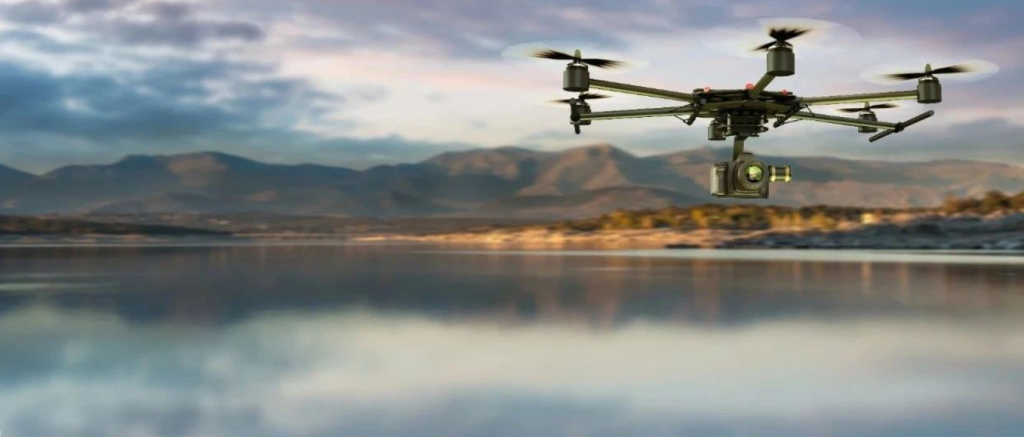
The film “Wandering Earth 2” shows the “hard power” of China’s technology. Among them, the fierce air battle between the controlled and mutinous “Predator” UAV and the fighter aircraft made the audience marvel, and they are full of expectations for the Chinese-made UAV equipment. As one of the many high-tech equipment shown in the film, the “Predator” UAV is a hybrid UAV, which can achieve vertical takeoff and landing and fast flight, and is full of science fiction. At present, UAV has become one of the key development fields of national high-end equipment, and its development in the civil field has attracted much attention. It is increasingly becoming an important equipment supporting the development of modern science and technology.
The overall competitiveness of China’s civil UAVs has been increasing. At present, the overall competitiveness of China’s civil UAVs is mainly reflected in the industrial scale and application scenarios. In terms of industrial scale, in recent years, the scale of China’s civil UAV industry has continued to grow. In 2021, the industrial scale will reach 65.21 billion yuan, accounting for more than 80% of the global output value, which is at the leading level in the world. At the same time, China has become a major manufacturing country of civil UAVs in the world by virtue of product diversity and progressiveness design. In terms of application scenarios, China’s UAV market is broad. Consumer-grade UAVs are mainly used in entertainment scenarios such as aerial photography and follow-up photography. Industrial-grade UAVs are increasingly used in logistics distribution, energy inspection, agriculture, forestry and plant protection, security monitoring, emergency security and other scenarios.
In recent years, with the continuous progress of technology in aviation related fields, the development and application of civil UAVs in China is gradually expanding. In the future, the development of China’s civil UAV industry will focus on information security, power system and scenario application.
The information security of UAV system will become a new performance that users pay attention to. UAV system information security refers to the security protection established for the information system carried by UAV, mainly including the protection of system hardware, software and data accuracy, integrity and confidentiality in the communication process. In recent years, the interruption of information transmission caused by malicious interference of UAVs has occurred frequently, and the security of relevant data and information has become extremely important. In the future, with the in-depth application of UAVs in various professional scenarios, UAVs will participate more and more frequently in the production and operation activities of users, and their information security level will attract more and more attention of users.
UAV power system may become a new focus to break through the application bottleneck. The UAV power system is the core constraint factor to ensure flight stability, flight duration and the space and weight that various functional loads can carry. At present, the UAV flight platform is sensitive to flight weight and flight duration. For some industrial applications, the work plan needs to be formulated according to the weight of the task load when performing the work task, which to some extent restricts the realization of the optimal path and maximum efficiency of the work. With the deep integration of the new generation of information technology and UAV, UAV may change from the data acquisition end to the data “acquisition+processing” carrier. This change may require the power system to have greater mission load carrying capacity and richer power supply capacity, which is of great significance for UAV to break through the application bottleneck.
“UAV+system solution” may become a new experience for multi-scenario applications. After the “Predator” UAV in “Wandering Earth 2” defected, each UAV can cooperate with each other through the network to attack in a cluster manner while achieving autonomous flight and performing tasks. In the future, the development of this distributed cooperation system will help improve the autonomous cooperation capability of UAVs. Take the application of unmanned aerial vehicles in agriculture as an example, complete the tasks of fertilizing, seeding and spraying through agricultural “unmanned aerial vehicles+unmanned vehicles” and other hardware equipment, complete the tasks of farmland monitoring and statistical analysis through remote sensing unmanned aerial vehicles, agricultural Internet of Things equipment and intelligent agricultural systems, and establish a set of “product+system solutions” including agricultural unmanned aerial vehicles, agricultural Internet of Things equipment and intelligent agricultural systems, which can better meet the comprehensive needs of users, Bring new consumer experience.






Please sign in to comment
register